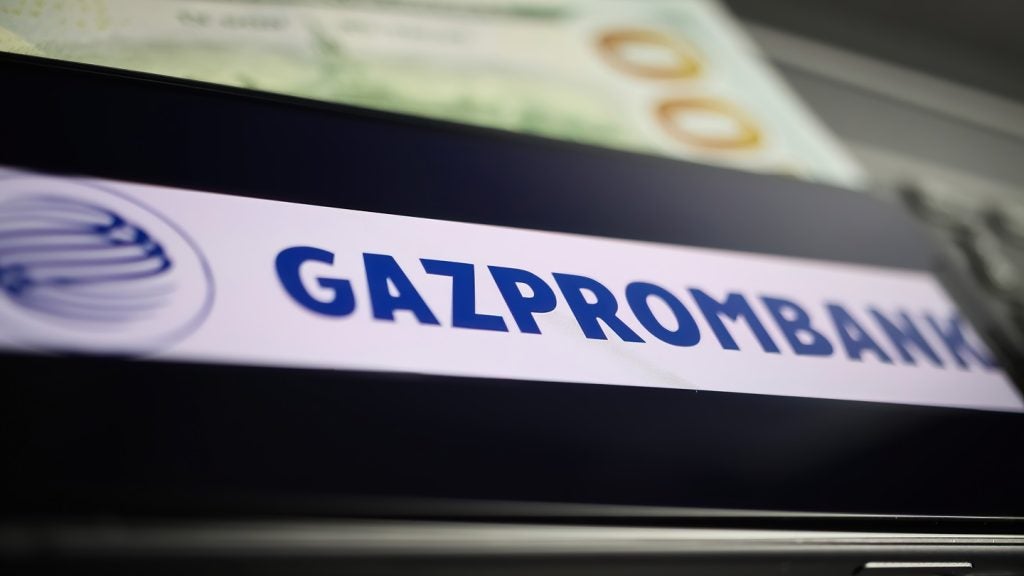US retail banking groups with 1,400 branches, Ohio-based National
City is in trouble – and it’s all down to its overexposure to the
country’s stricken mortgage market. There’s a good chance the group
could be bought by a rival, but by whom and at what price?
Charles Davis reports.
In the latest twist to the US subprime mortgage debacle, another
major US bank is considering a range of strategic alternatives,
including a possible sale that has several large Midwestern banks’
attention. Facing mounting losses from its subprime exposure,
National City, Ohio’s largest bank and one of the nation’s top
mortgage lenders, has hired Goldman Sachs to find a way out of the
mess.
“The review has no impact on National City’s day-to-day
operations,” company chairman, president and CEO Peter Raskind said
in a statement, adding that the bank remains “focused” on providing
the same products and services to its customers throughout the
process.
Speculation immediately focused on another large Ohio bank –
Cincinnati-based Fifth Third, as well as Cleveland-based KeyCorp,
which is reportedly also in talks with National City. Besides the
two Ohio banks, other suitors are said to be JPMorgan Chase, Wells
Fargo and a handful of foreign banks, including Canada’s
Scotiabank. The stakes are huge: National City has assets of $150
billion, while Fifth Third reports assets of $100 billion.
It’s a dramatic turn of events for the once high-flying National
City, which spent the past few years establishing itself as one of
the top home mortgage lenders in the country, expanding into
Florida and broadening its Midwestern footprint.
The Florida expansion, which made a lot of sense as the mortgage
market was booming, has turned into one of the nation’s hardest-hit
housing markets.

How well do you really know your competitors?
Access the most comprehensive Company Profiles on the market, powered by GlobalData. Save hours of research. Gain competitive edge.

Thank you!
Your download email will arrive shortly
Not ready to buy yet? Download a free sample
We are confident about the unique quality of our Company Profiles. However, we want you to make the most beneficial decision for your business, so we offer a free sample that you can download by submitting the below form
By GlobalDataThanks in large part to the slumping housing market, National City
reported losses of $333 million for the fourth quarter. The bank
currently holds up to $25 billion in additional so-called high-risk
assets, according to reports. The firm’s stock has dropped from a
high of $38 in May 2006 to a low of $6.56 in recent weeks.
An acquisition is not a foregone conclusion, as the bank has
several options it could make to raise much-needed capital,
including cutting its dividend or selling off some assets. An
announcement is expected before the end of April, when the bank is
scheduled to release its quarterly earnings.

Cutting its workforce by 10 percent
In addition to cutting its dividend, National City, one of the
nation’s top ten largest banks by assets, has tried to rescue its
finances by cutting its workforce by more than 10 percent. It
currently has around 32,000 employees and 1,400 branches in nine
states.
Another option could involve the $1 billion in Visa shares that
National City still owns. National City sold about one-third of its
Visa shares when the credit card company went public recently. It
can’t sell the remainder for three years because of restrictions on
the stock. However, it could leverage those shares by taking
something less than they are worth now, in exchange for turning
over the full proceeds later.
Banking analyst Keith Horowitz of Citigroup said in a report that
if National City doesn’t sell it probably would have to cut the
dividend. “If no sale emerges, we expect the quarterly dividend
will be cut by 75 percent, to 5 cents,” Horowitz wrote. Or it could
be suspended altogether, he said. He sees Fifth Third’s purchase of
National City as a “remote” possibility.
A merger right now with Fifth Third could put it in an awkward
position. Fifth Third already is in the midst of one merger, with
First Charter, a bank holding company based in Charlotte. An offer
for National City could jeopardise that deal. Fifth Third is also
on record as saying market conditions make now a bad time to be in
the merger market – at least as a seller.
In opposing a shareholder proposal to sell the bank, Fifth Third
management writes in the company’s proxy statement for its April 15
annual meeting that “current general conditions within the banking
industry, with very little merger and acquisition activity and with
many potential acquirers of banks on the sidelines, further limit
the value that could be realised by the adoption of such a
proposal”.
Another obstacle to a sale of National City to an Ohio bank is the
antitrust issues surrounding two banks with overlapping retail
markets. According to the Justice Department, if a proposed deal
would result in post-merger market share in excess of 35 percent,
the Federal Reserve is likely to review the transaction
further.

Morgan Stanley banking analyst Betsy Graseck stated that National
City’s choices are either to sell or to scramble for money through
a dividend cut or other tactics. “Given our expectations of further
home price depreciation, credit deterioration and higher borrowing
costs, we believe National City is more likely to sell itself than
to go it alone”. Remaining independent, she added, “would likely
require a further dividend cut and possibly more capital
raising.”
The problem with a sale is National City’s eroding stock price. The
company’s stock has fallen about 70 percent in the past year,
giving it a market capitalisation of about $6 billion. There is
even some doubt the company will be sold in one chunk.
“We would be surprised if the company will receive acceptable bids
for the entire corporation considering its high exposure to high
risk assets [such as] third party-originated home equity loans,
construction and leverage loans,” said analyst Gerard Cassidy at
RBC Capital Markets. “The most likely alternative is the sale of
assets, in our opinion.”
Terry McEvoy, an analyst at Oppenheimer & Co, wrote in a
research note that if the company should try to sell off pieces,
its retail business in Chicago, with 135 branches and $11 billion
of deposits, might interest a buyer.
Further complicating matters, Washington Mutual’s newly announced
$7 billion capital injection from a consortium led by private
equity firm TPG could provide the formula for yet another escape
route for National City. Private equity attracted to WaMu could
find its way to National City as well, although there are no
guarantees on the open market.
Management would welcome the chance to keep the bank intact, one of
a dizzying array of options in a remarkably fluid situation.

In the bank’s annual report, published in February, Raskind wrote:
“Our mortgage business came under considerable pressure starting in
late July and early August 2007 with the near-total stoppage in the
mortgage capital markets. While we ceased broker production of new
national home equity originations immediately, we had a warehouse
of loans held for sale for which there were no buyers, as well as a
pipeline of approved applications awaiting funding. The retention
of these loans increased the size of our balance sheet above where
we had planned it to be, and also drove losses in the third and
fourth quarters as we marked loans down to their current
value.
“Other than conforming, agency-eligible mortgages, the market for
virtually all other types of mortgage loans continues to be
illiquid to non-existent.”









